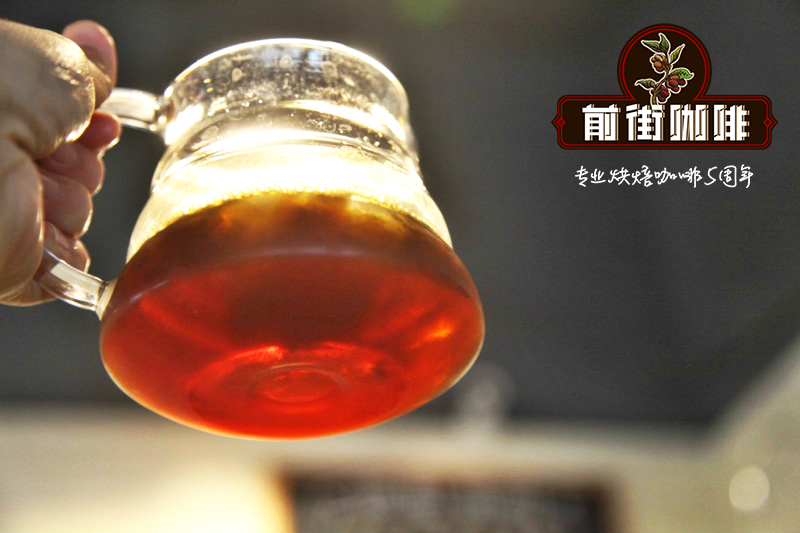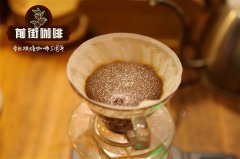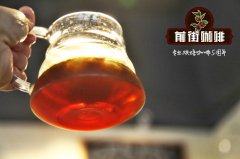The reason why Hawaiian Kona coffee is expensive how to make and drink Hawaiian Kona coffee?

Professional coffee knowledge exchange more coffee bean information please follow the coffee workshop (Wechat official account cafe_style)
Why is Kona coffee so expensive?
Across latitudes 19 to 22 degrees, south of the Tropic of Cancer, the Hawaiian archipelago, blown by trade winds, is a perfect coffee growing area. The volcanic soil and tropical climate, coupled with slight humidity and regular afternoon showers, create an ideal planting environment that can only appear in idyllic poetry, and add some meticulous but unique flavor characteristics to the coffee beans here. Some coffee fans assert that the Kona coffee produced here is definitely the best coffee in the world, with drupe flavor and chocolate flavor, and tastes smooth and delicious!
After the outbreak of the first World War, the demand for coffee increased sharply, and the rise in demand led to a rise in prices, and Kona coffee was no exception. The period from the outbreak of World War I to 1928 was the golden age of Kona Coffee. In 1940, World War II caused the price of coffee to rise again. In the 1970s and 1980s, the price of Kona Coffee experienced several ups and downs, but it was from this period that Kona Coffee established itself as the top coffee in the world.
Even though Kona Coffee has been famous all over the world, its production remains relatively low. Because the main producing area of Kona Coffee is located on the hillside of the Mauna Loa volcano on the big island of Hawaii. The narrow coffee belt is about 50km long and 1.6km wide, covering a total area of about 1400 hectares and producing less than 2 million pounds of coffee beans a year.
Kona coffee has been picked by hand since ancient times, which stems from the family farm's tradition of using family labor, and more to ensure that only the best quality beans can be used for coffee production. The ripening season of Kona Coffee is between September and December each year, and the farm must ensure that coffee beans that are ripe at different times are picked by hand in time. As a result, of all coffee producers, Hawaii has the most stringent management of the coffee industry and the highest labor costs.
Just picked the Kona fruit red and attractive, comparable to cherries, so the local people generally call the Kona coffee fruit "Kona cherry". Once the Kona fruit is picked, it must be followed up immediately to prevent the fruit from spoiling and affecting the taste of coffee beans. Kona coffee is generally processed by water washing, and Hawaii's clean and sweet mountain spring water provides the ideal conditions for water washing, which creates the bright and clear appearance and pure and fresh taste of Kona coffee beans. Subsequently, the wet coffee beans are placed in the sun, known as the "hoshidana drying rack", to allow the beans to dry slowly and naturally, retaining their special flavor. Dried Kona beans are called "parchment" or "Kona gold" because after drying, the beans form a layer of golden skin. When the beans are completely dry, wear off the golden skin on the surface and grade the beans. And all this work needs to be done by hand non-stop.
Superior natural conditions enable Arabica coffee trees with the ancient lineage of the Ethiopian plateau to be produced freely in the Kona region, creating a stronger coffee flavor. From sowing, picking and receiving washing treatment, sun exposure and polishing, each process is manual, and the output is extremely limited. Hawaii 100% Kona coffee naturally looks high-quality and expensive, and is synonymous with Blue Mountain Coffee as high-grade coffee. If it were not for Kona in Hawaii, it would be difficult to have 100% pure Kona coffee beans.
Brewing Analysis of Kona Coffee
1. Filter cup: V60
two。 Water temperature: 92 degrees
3. Degree of grinding: small Fuji 3.5
4. Baking degree: medium baking
5. Steaming time: 30 seconds
Flavor: malt, mulberry fruit, long-lasting caramel sweetness
Qianjie coffee suggestion technique: slow and stable continuous water injection: thin water flowing around, gently injecting water to let it extract evenly, very slowly, can also be stirred properly with a stirring rod, usually in the steaming stage, a cross stirring is carried out to make the water fully come into contact with coffee powder and increase the release of aromatic substances.
Qianjie coffee: Guangzhou bakery, the store is small but a variety of beans, you can find a variety of unknown beans, but also provide online store services. Https://shop104210103.taobao.com
Important Notice :
前街咖啡 FrontStreet Coffee has moved to new addredd:
FrontStreet Coffee Address: 315,Donghua East Road,GuangZhou
Tel:020 38364473
- Prev

How do I drink Hawaiian Kona coffee? Hawaiian Kona Coffee Brewing course sharing
Professional coffee knowledge exchange more coffee bean information Please pay attention to the coffee workshop (Wechat official account cafe_style) unique growth and climatic environment make Hawaiian Kona coffee perfect taste: Hawaiian beach, monsoon and volcanic taste. Kona coffee beans from Hawaii are the most beautiful coffee beans in the world. They are extremely full and shiny. Kona Coffee
- Next

Hawaiian Kona coffee price expensive reasons Hawaiian Kona coffee how to bubble how to drink?
Professional coffee knowledge exchange More coffee bean information Please pay attention to coffee workshop (Weixin Official Accounts cafe_style) Why is Kona coffee so expensive? Straddling the latitude 19 to 22 degrees south of the Tropic of Cancer, the trade windswept Hawaiian Islands are a natural and perfect coffee-growing area. Volcanic soil and tropical climate, complemented by light humidity, regular afternoons
Related
- Does Rose Summer choose Blue, Green or Red? Detailed explanation of Rose Summer Coffee plots and Classification in Panamanian Jade Manor
- What is the difference between the origin, producing area, processing plant, cooperative and manor of coffee beans?
- How fine does the espresso powder fit? how to grind the espresso?
- Sca coffee roasting degree color card coffee roasting degree 8 roasting color values what do you mean?
- The practice of lattes: how to make lattes at home
- Introduction to Indonesian Fine Coffee beans-- Java Coffee producing area of Indonesian Arabica Coffee
- How much will the flavor of light and medium roasted rose summer be expressed? What baking level is rose summer suitable for?
- Introduction to the characteristics of washing, sun-drying or wet-planing coffee commonly used in Mantenin, Indonesia
- Price characteristics of Arabica Coffee Bean Starbucks introduction to Manning Coffee Bean Taste producing area Variety Manor
- What is the authentic Yega flavor? What are the flavor characteristics of the really excellent Yejasuffi coffee beans?

